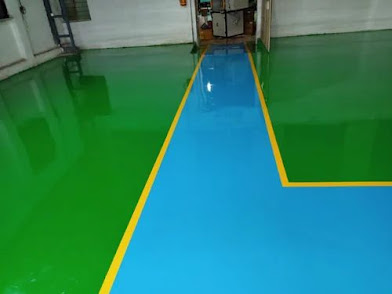Exploring the Benefits of Antistatic Coatings in Electronics Manufacturing
In today's technologically advanced world, where electronic devices are an integral part of our daily lives, the need for effective electrostatic discharge (ESD) control has become increasingly crucial. Antistatic coatings have emerged as a reliable solution to prevent static electricity buildup and protect sensitive electronic components from potential damage. In this blog, we will delve into the world of antistatic coatings, exploring their benefits, applications, and the role they play in enhancing safety and efficiency in various industries.
Antistatic coatings are specially formulated substances designed to reduce or eliminate static electricity on surfaces. They are typically applied to materials such as plastics, films, glass, or ceramics to provide a conductive or dissipative layer. This layer allows the controlled dissipation of static charges, preventing the buildup of potentially damaging electrostatic discharges.
Electrostatic Discharge Protection: One of the primary advantages of antistatic coatings is their ability to protect electronic components from electrostatic discharges. By providing a path for the dissipation of static charges, these coatings prevent sudden high voltage transfers that can damage sensitive circuitry.
Enhanced Safety: Antistatic coatings play a crucial role in ensuring safety in industries where static electricity poses a risk. In environments such as chemical plants or explosive atmospheres, where flammable materials are present, the discharge of static electricity can lead to disastrous consequences. Antistatic coatings mitigate this risk by minimizing the accumulation of static charges on surfaces, reducing the likelihood of sparks or explosions.
Surface Protection: Antistatic coatings not only provide ESD protection but also offer a layer of protection for the underlying surface. They can shield materials from dust, dirt, and other contaminants that can cause damage or affect performance. Additionally, antistatic coatings can minimize the adhesion of particles or debris, making surfaces easier to clean and maintain.
Electronics and Semiconductors: The electronics industry heavily relies on antistatic coatings to protect delicate components during manufacturing, assembly, and handling processes. From printed circuit boards (PCBs) to integrated circuits (ICs), antistatic coatings ensure the integrity and functionality of electronic devices by preventing static discharges that could harm sensitive microelectronics.
Automotive: Antistatic coatings find extensive use in the automotive industry, particularly in the manufacturing of vehicle interiors. Coatings applied to dashboards, instrument panels, or seats can prevent static buildup and minimize the attraction of dust or lint. This not only enhances the aesthetics of the interior but also improves the overall comfort and cleanliness of the vehicle.
Packaging and Manufacturing: In packaging and manufacturing industries, antistatic coatings are employed to safeguard products, especially those susceptible to static damage, such as sensitive electronic components, pharmaceuticals, or chemical substances. Antistatic coatings applied to packaging materials reduce the risk of static-related failures during transport or storage, ensuring product quality and reliability.
Aerospace and Defense: In the aerospace and defense sectors, where electrostatic discharge can compromise the functionality and safety of critical equipment, antistatic coatings play a vital role. They are used on aircraft components, communication devices, radar systems, and even clothing worn by personnel to maintain a static-free environment and prevent any interference or damage.
In conclusion, antistatic coatings offer a reliable solution to mitigate the risks associated with electrostatic discharge in various industries. By providing a protective layer that dissipates static charges, these coatings enhance safety, protect sensitive electronics, and maintain the integrity of products and equipment. As technology continues to advance and electronic components become increasingly sensitive, the demand for effective antistatic coatings is expected to rise.



.png)
Comments
Post a Comment